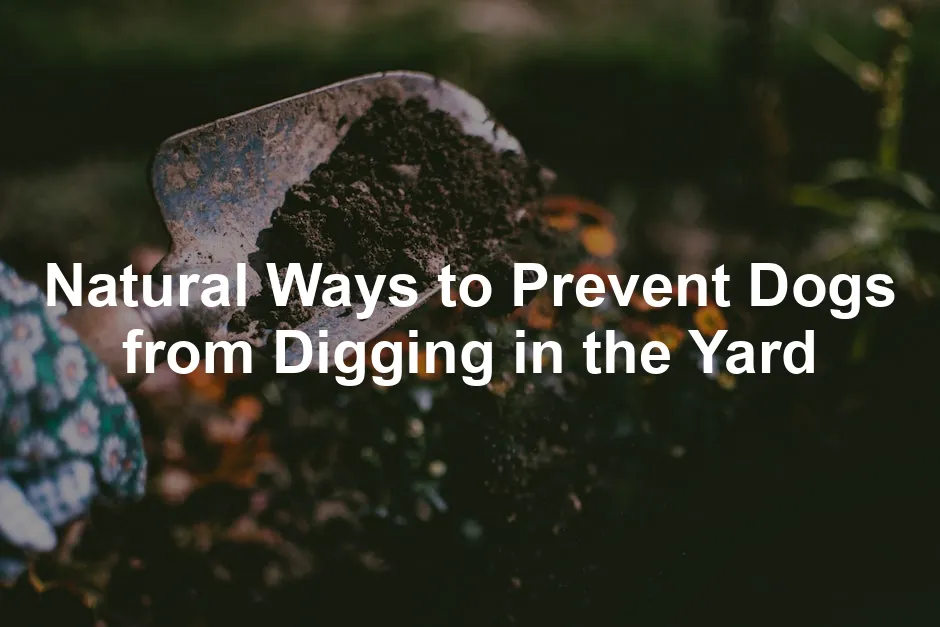Introduction
Ah, the joys of dog ownership! They greet you with wagging tails and slobbery kisses, but then—BAM!—they’ve turned your yard into a mini excavation site. If you’ve found yourself in this predicament, you’re not alone. Many dog owners face the challenge of their furry friends digging up the garden like it’s their personal sandbox.
Understanding why dogs dig is crucial. It’s not just a rebellious act; it stems from instinctual behaviors. Dogs dig for various reasons, and knowing the root cause can help you address the issue more effectively.
In this article, we’ll explore natural solutions to curb this behavior. No punishment involved! Instead, we’ll focus on positive methods to keep your yard intact while also keeping your pup happy. So, grab a cup of coffee (or a treat for your dog), and let’s get started!
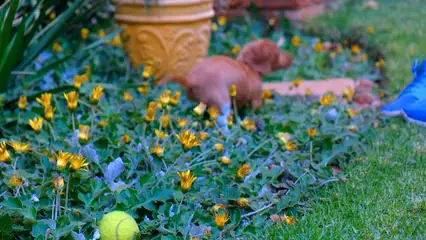
Understanding the Behavior
Why Do Dogs Dig?
Digging is as natural to dogs as barking at the mailman. Many breeds have it in their DNA. For instance, terriers were bred to dig out small prey. But digging isn’t just about instincts; it can also signal a range of other issues.
Boredom is a major culprit. A bored dog is like a kid left alone in a candy store—trouble is bound to happen! Statistics show that dogs who don’t get enough exercise or mental stimulation may turn to digging as an outlet. If your pooch isn’t getting their daily dose of fun, the garden might just become their playground.
Anxiety plays a role too. Dogs can feel stressed due to separation, loud noises, or even changes in their environment. When anxious, they might dig to create a “den” for safety or comfort. One dog trainer shared an anecdote about a Golden Retriever who dug during thunderstorms. Once provided with a cozy spot indoors, the digging stopped.
Temperature regulation is another reason. Dogs might dig to find cooler ground during hot days. If your dog is digging like a maniac in the summer, they could be trying to cool off.
Lastly, foraging instincts kick in. Dogs may dig to hide toys, treats, or even just to satisfy their natural hunting behaviors. It’s their way of searching for “treasures” that may not exist!
Understanding these motivations can empower you to address the digging behavior effectively and humanely. With a little patience and creativity, you can help your dog channel that digging energy elsewhere!
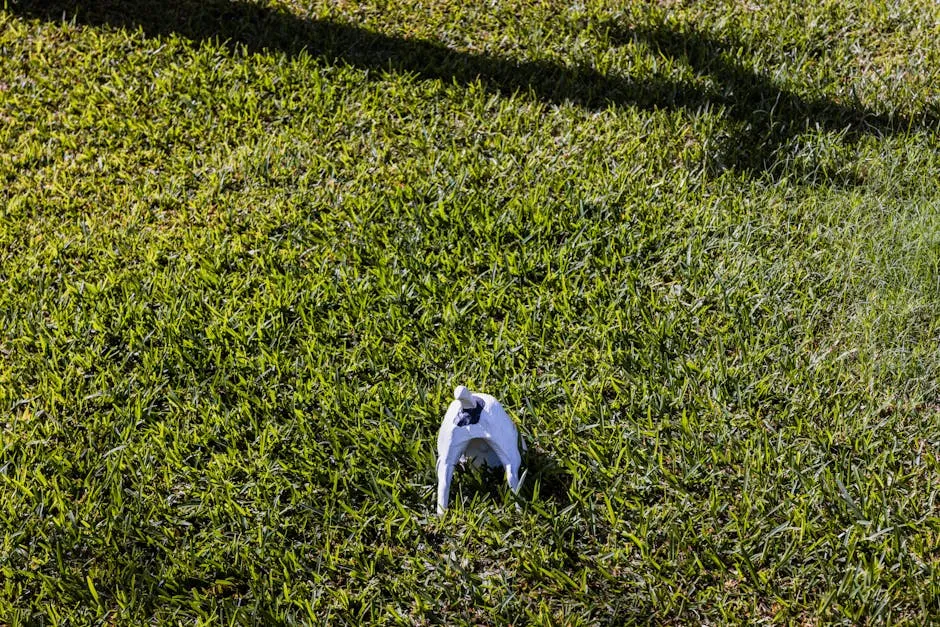
Natural Solutions to Prevent Digging
1. Increase Physical Exercise and Mental Stimulation
Let’s face it: a bored dog is like a toddler at a candy store—trouble is just a paw away! One of the most effective ways to curb the digging habit is to crank up your dog’s physical activity. Think about it: dogs dig to burn off excess energy. So, the more you tire them out, the less likely they’ll feel the need to dig up your garden.
Regular walks should become a staple in your dog’s routine. Aim for at least 30 minutes a day. And if you can, mix it up! Take trips to the dog park, where they can run free, socialize, and be the life of the paw-ty. Not only does this provide physical exercise, but it also offers mental stimulation as they meet new canine friends and explore different scents.
Interactive games can also work wonders! Fetch is a classic, but you can spice it up with some tug-of-war using a sturdy rope toy. Puzzle toys are another fantastic option. Look for toys that dispense treats as your dog figures them out. These mental challenges keep their brains engaged and burn off some of that digging energy.
Consider toys like the KONG Classic Dog Toy, which you can stuff with peanut butter or treats. Freeze it overnight for an extra challenge! Or try out the Outward Hound Hide-A-Squirrel Puzzle Toy, where your pup can dig out plush squirrels from their cozy tree trunk. It’s like a game of hide and seek that ends with a tasty reward!
Remember, a well-exercised dog is a happy dog. So, lace up those sneakers and hit the sidewalk. Your garden will thank you for it!
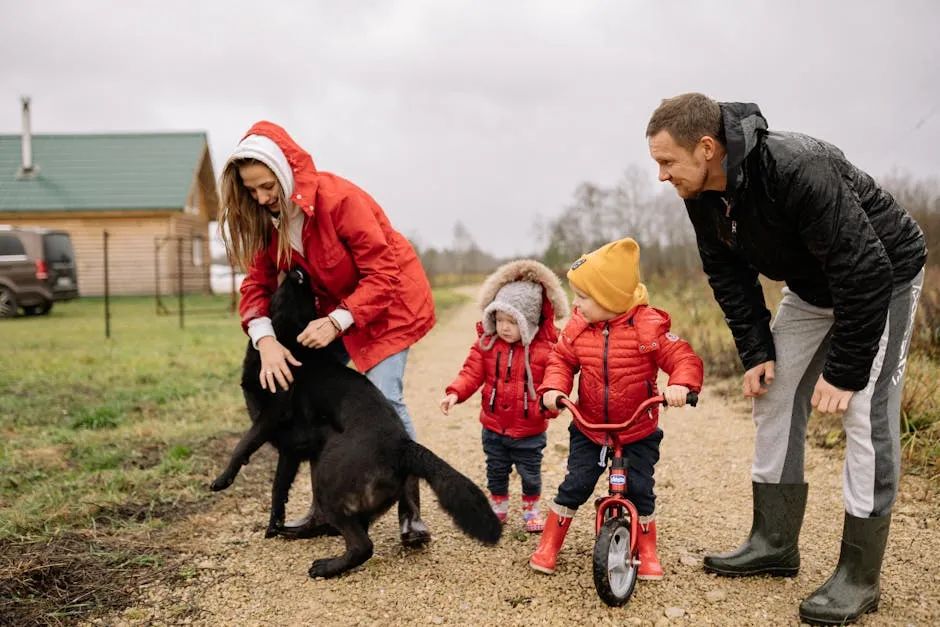
2. Create a Designated Digging Area
Sometimes, the best way to manage a dog’s digging instinct is to embrace it. Instead of fighting your dog’s natural urge to dig, why not provide them with a designated area where digging is not just allowed, but encouraged? This approach can be a win-win!
Start by choosing a section of your yard. A small sandbox or a pit filled with loose soil works perfectly. The goal is to create a space where your dog can dig to their heart’s content without wreaking havoc on your flower beds. Consider burying some of their favorite toys or treats in the area. This will create an incentive for your pup to dig there rather than in your prized petunias.
Once you’ve set up the digging zone, spend time training your dog to use it. Every time they start to dig elsewhere, redirect them to the designated area. When they dig in their spot, shower them with praise and maybe even a treat. Positive reinforcement will help them associate this area with good vibes and rewards.
Many dog owners have found success using this method. One owner reported that after creating a sandbox in her yard, her Golden Retriever stopped digging up the garden entirely! Instead, he became a digging superstar in his own little sandbox haven.
Creating a designated digging area not only protects your garden but also gives your dog an outlet for their natural instincts. So, let them dig! Just make sure it’s in the right spot. With a little effort and training, you can turn your dog’s digging mischief into a fun and productive activity.
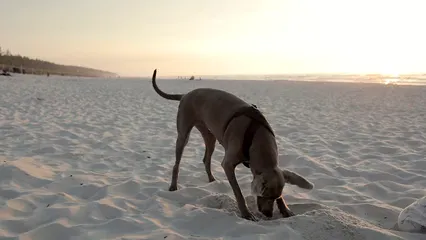
3. Use Natural Deterrents
If your dog has turned your yard into a dig site, fear not! Natural deterrents can help you reclaim your garden without harsh chemicals. Let’s look at some of the most effective options to keep those paws from pawing at your precious plants.
First up, cayenne pepper. This spicy little number is a great deterrent. Dogs dislike the taste and smell. Simply sprinkle it around the areas they tend to dig. Just be cautious! Avoid letting it get into their eyes or nose. A little goes a long way, and you don’t want to overdo it.
Next, we have vinegar. This is not just for your salad dressing anymore! Mix equal parts water and vinegar in a spray bottle. Spritz it on the ground where your dog digs. The strong scent will discourage them from returning. Plus, it’s safe for the environment and your furry friend!
Citrus peels are another fantastic option. Dogs often steer clear of citrus scents. Scatter orange, lemon, or lime peels around your garden. Not only will it smell fresh and zesty, but it’ll also keep your dog away. Just remember to replace them regularly, as they can dry out and lose their effectiveness.
You can also consider using coffee grounds. Their strong aroma can deter dogs from digging in certain areas. Mix them into the soil or sprinkle them around sensitive spots. It’s a win-win: you’re recycling used coffee and keeping your dog at bay!
When applying these natural deterrents, be strategic. Focus on the areas where your dog digs the most. Create a barrier of scents they dislike around your flower beds or vegetable patches.
While these methods are effective, safety is paramount. Always ensure the substances used are non-toxic. Keep an eye on your dog for any reactions. If they seem overly bothered by any smell, it’s best to try a different approach.
Incorporating natural deterrents not only helps keep your garden intact, but it also promotes a chemical-free environment for your dog. With a little ingenuity and diligence, you can turn your yard back into a dog-friendly space, minus the digging drama!

4. Address Temperature and Comfort
Dogs are smart. They dig for various reasons, and one of those reasons is temperature regulation. On hot days, our furry friends may dig to find cooler ground. So, what can you do to keep your pup comfortable and curb their digging tendencies?
First, ensure your dog has ample shade. Create shaded areas in your yard, using umbrellas, tarps, or trees. Dogs appreciate a cool spot to rest after a game of fetch. Consider purchasing a Dog House with Ventilation. It provides a cozy retreat from the sun. Opt for one with good ventilation to keep the air flowing.
Hydration is key! Always have fresh water available. Dogs can get dehydrated quickly, especially in the summer heat. A kiddie pool can also be a fun way for them to cool off. Just add some water, and let them splash around. This will keep them entertained and less likely to dig.
Cooling mats are another great investment. These mats provide a cool surface for dogs to lie on. They come in various sizes, catering to all breeds. Just lay it down in their favorite lounging spot, and watch them enjoy a nice chill. Consider getting a Dog Cooling Mat for those extra hot days!
During hot weather, adjust your dog’s outdoor time. Limit play sessions in the heat of the day. Instead, plan walks or playtime in the cooler mornings or evenings. This will help prevent your dog from seeking out the cool earth by digging.
Lastly, monitor your dog’s behavior. If they continue to dig excessively, it may signal discomfort or stress. Be attentive to their needs and adapt your approach. By providing ample shade, water, and cool resting areas, you’ll ensure your dog stays comfortable. And in turn, reduce those unwanted digging escapades.
With a little effort, you can create a relaxing outdoor environment. Your dog will thank you, and your yard will remain intact. Happy gardening!
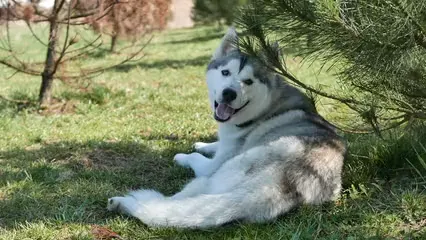
5. Managing Anxiety and Boredom
Anxiety and boredom can turn your sweet pup into a digging dynamo. When dogs feel anxious, they may dig to create a safe place. Boredom? That’s just an invitation for your dog to excavate your yard! So, how do we tackle these two troublemakers?
First, let’s talk training. Consistency is key. Establish a routine that includes plenty of walks and playtime. You want to keep your furry friend physically active and mentally stimulated. A tired dog is a happy dog!
Consider adding interactive toys into the mix. Puzzle toys filled with treats can keep your dog busy for hours. Imagine their delight as they work to get that tasty morsel. Dogs like to earn their snacks! A Interactive Dog Puzzle Toy can be a great addition to your pup’s toy collection!
Change up your routine, too. If you always walk at the same time, switch it up! Try different routes or visit new parks. Variety is the spice of life, after all.
Environmental enrichment is another vital part of the equation. Create a sensory garden. Add different textures, scents, and toys for your dog to explore. Even a simple sniffing game can work wonders. Hide treats around the yard and let them track them down. It’s like a treasure hunt but with kibble!
Now, let’s discuss anxiety. Calming products can help your dog feel more secure. Consider trying a Thundershirt Anxiety Vest or another calming solution. These garments provide gentle pressure, which can be soothing during stressful times.
Aromatherapy can also work wonders. Calming sprays or diffusers with lavender can create a more peaceful environment. Just be sure the scents are safe for dogs.
Don’t overlook the power of companionship. If your pup suffers from separation anxiety, consider getting another dog. A furry friend can provide comfort. But remember, it’s a big decision!
Lastly, if anxiety persists, consult your vet. They may recommend further solutions, including behavior modification techniques or medication.
By addressing anxiety and boredom effectively, you can reduce unwanted digging. A calm, engaged dog is less likely to turn your yard into their personal excavation site!

6. Professional Training and Behavior Modification
Sometimes, digging habits can be stubborn. If your dog keeps digging despite your best efforts, it may be time to seek professional help. A certified dog trainer can provide valuable insights and techniques tailored to your pup’s specific behavior.
Working with a trainer can be a game-changer. They can assess your dog’s behavior in real-time, providing immediate feedback. This hands-on approach often yields faster results than DIY methods. Plus, trainers can help you understand your dog’s unique triggers.
Positive reinforcement is crucial in any training program. Instead of punishing your dog for digging, reward them for desired behavior. This encourages them to repeat those positive actions. Trainers excel at teaching you how to reward effectively, reinforcing good habits without the stress.
Consistency is vital. A professional can help you establish a training schedule that works for both you and your dog. Regular sessions keep your dog engaged and excited about learning. It’s not just about stopping the digging; it’s about building trust and communication.
Group classes can also be beneficial. They provide socialization opportunities for your dog while allowing you to learn from others’ experiences. Sharing stories and solutions can create a great support network.
If digging is rooted in anxiety, trainers can introduce desensitization techniques. This gradual approach helps your dog feel more comfortable in stressful situations.
Don’t be afraid to reach out for help. Sometimes, the best strategies come from those with expertise. By seeking professional training and behavior modification, you’re investing in your dog’s well-being—and your yard’s future! With patience and support, you can help your furry friend become a well-mannered companion, keeping your garden intact and your sanity intact!
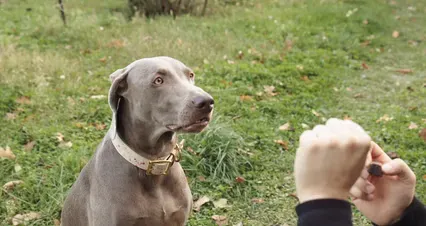
FAQs
Is digging a sign of bad behavior?
Nope! Digging is a natural instinct for dogs. It’s not necessarily bad behavior, but rather a way for them to express themselves. Understanding the reasons behind their digging can help you manage it effectively.
How can I stop my dog from digging without punishment?
Focus on natural solutions we discussed! Increase exercise, create a digging zone, use deterrents, and address boredom or anxiety. These positive methods will encourage better behaviors without harsh consequences.
Will all dogs stop digging if I follow these methods?
Results can vary based on each dog’s unique personality and background. Some dogs may respond quickly, while others require more time and varying strategies. Patience is essential!
What if my dog continues to dig despite my efforts?
If digging persists, consider seeking professional help. A trainer can evaluate your dog’s behavior and identify potential stressors in their environment that may contribute to the digging.
Can certain breeds be more prone to digging?
Absolutely! Some breeds, like terriers and hounds, have a natural tendency to dig due to their instincts and genetics. Knowing your dog’s breed can help you tailor your approach to managing their digging.
Please let us know what you think about our content by leaving a comment down below!
Thank you for reading till here 🙂
All images from Pexels

